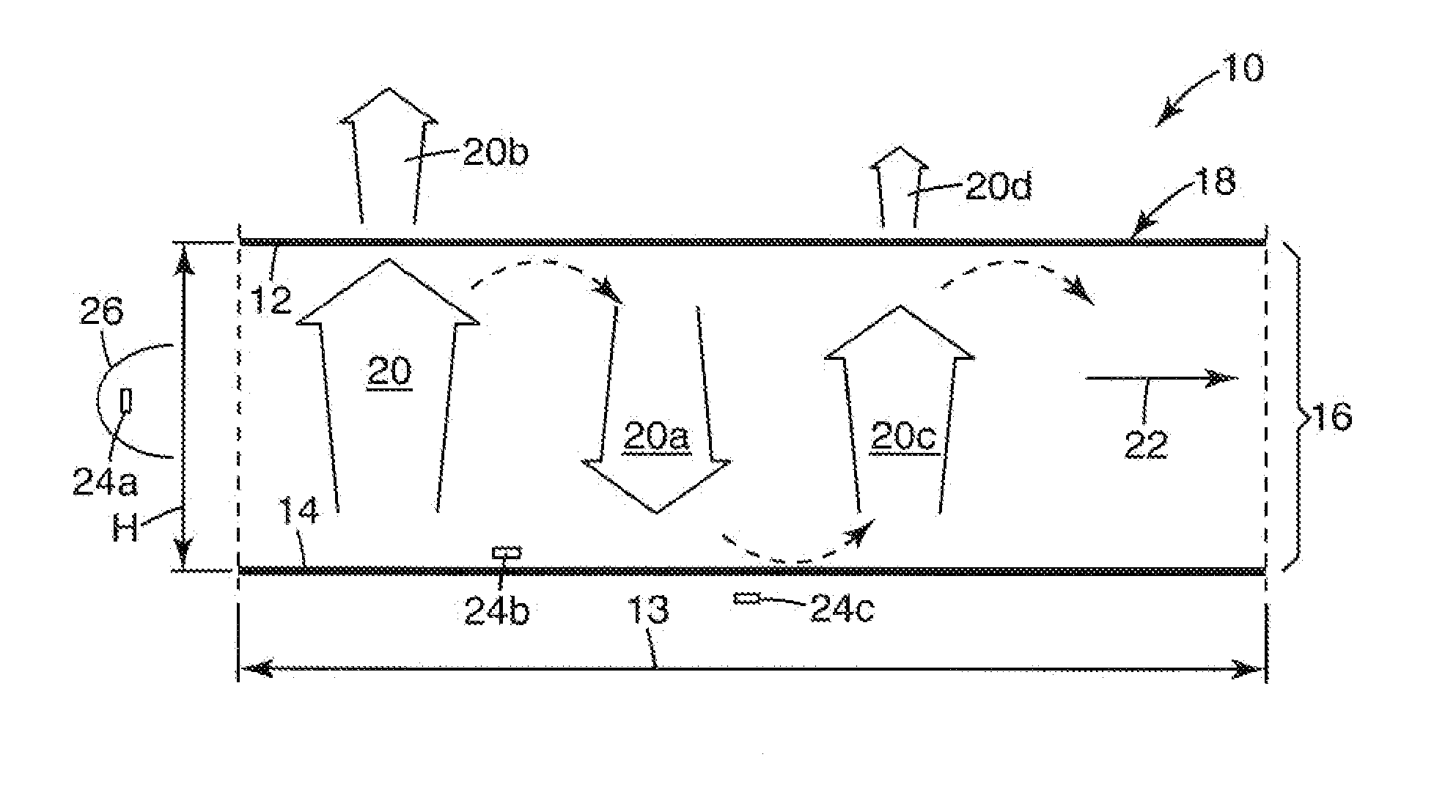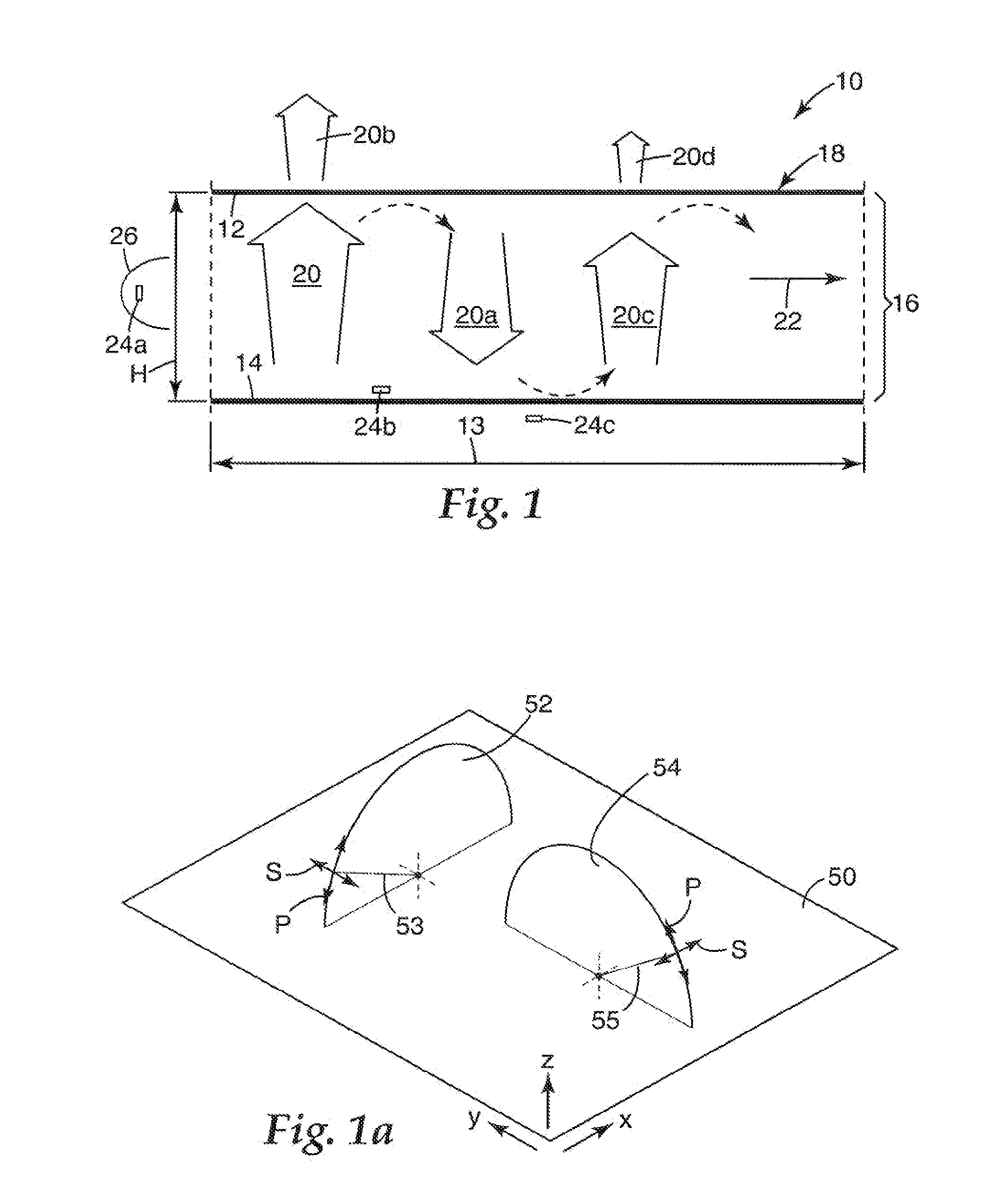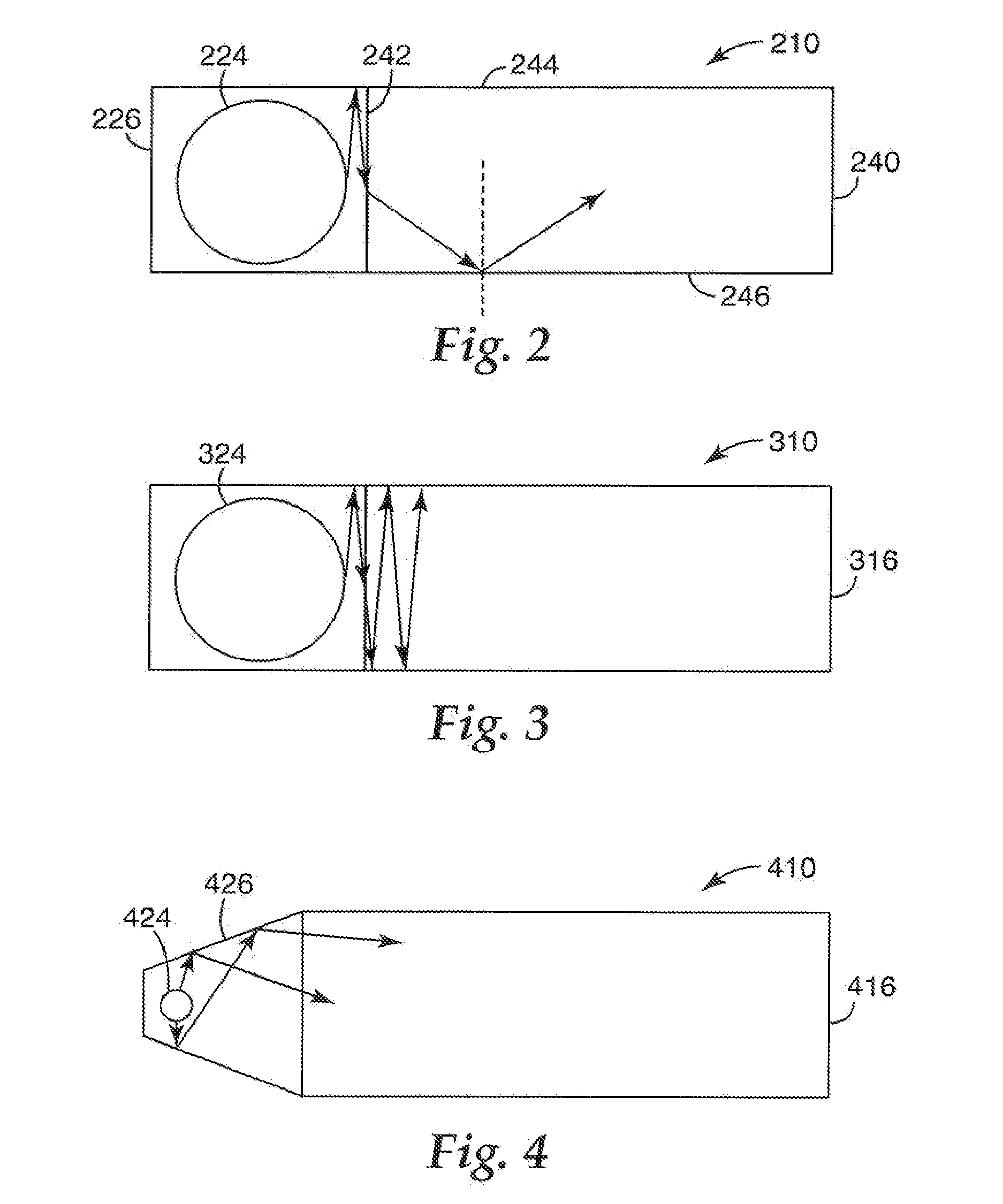Recycling backlights with semi-specular components
- Summary
- Abstract
- Description
- Claims
- Application Information
AI Technical Summary
Benefits of technology
Problems solved by technology
Method used
Image
Examples
example f
Bead Coated ESR
[0119]A film substantially identical to Vikuiti™ ESR film was coated with PMMA beads mixed with a polymeric binder, similar to the construction of beaded gain diffuser films which are commonly used as brightness enhancement films in LCD backlights. A sample of the film was inserted into the Autronics Conoscope and illuminated with collimated light incident at various angles of incidence θ in a plane of incidence whose azimuthal direction Phi (a rotation of the plane of incidence pivoted about the surface normal direction) was 0. The measured reflected light intensity vs. angle data for all theta and phi angles can be visualized with a contour plot such as the one in FIG. 12, which is for an angle of incidence of 45 degrees. The contour plot is a polar plot, with angle of reflection ranging from 0 degrees to 80 degrees along any azimuthal (Phi) direction. The horizontal direction is referred to as the Phi=0 axis, and the vertical direction is referred to as the Phi=90 ...
example e
TiO2 Particles in THV on X-ESR
[0128]An example of construction (2), a partial Lambertian plus high reflectance specular reflector, was made by laminating a diffusing film to a broadband multilayer mirror. The mirror was constructed with a multilayer of PEN and PMMA as for conventional Vikuiti™ ESR, but with an extended reflection band (hence the designation X-ESR) that extends from 400 nm all the way to 1600 nm. The diffuse film was made by blending 0.1% by weight of a white TiO2 pigment into THV, which was then extruded and cast as a smooth film. Standard polymer extrusion and film casting processes were employed. The small particle size of the titania, coupled with the large index difference between the titania and the THV (2.4 vs. 1.35) results in a wide angle scattering diffuser. Only the low concentration of the titania prevents the diffuse film from reflecting most of the light. Substantial amounts of light pass through the THV film and are specularly reflected by the multilay...
example i
DFA on X-ESR
[0132]A broader distribution of scattered light than Example K can be obtained with other substantially forward scattering diffusers. Diffusers made with spherical particles in a matrix that has an index of refraction only slightly different than the index of the particles can have this property. One example is a diffuser film known as DFA from 3M Co. The particle loading and diffuser thickness then determine the degree of specularity, which affects the transport ratio. A 0.4 mm thick sheet of DFA was laminated to the X-ESR and measured in the Autronics instrument with 45 degree incident light. Luminance data extracted for reflectance angles along the phi=0 and phi=90 degree axis are shown in FIGS. 17a and 17b. Although there is no pure Lambertian component, the measured transport ratio at 45 degrees drops to T=0.651.
PUM
 Login to View More
Login to View More Abstract
Description
Claims
Application Information
 Login to View More
Login to View More - R&D
- Intellectual Property
- Life Sciences
- Materials
- Tech Scout
- Unparalleled Data Quality
- Higher Quality Content
- 60% Fewer Hallucinations
Browse by: Latest US Patents, China's latest patents, Technical Efficacy Thesaurus, Application Domain, Technology Topic, Popular Technical Reports.
© 2025 PatSnap. All rights reserved.Legal|Privacy policy|Modern Slavery Act Transparency Statement|Sitemap|About US| Contact US: help@patsnap.com



